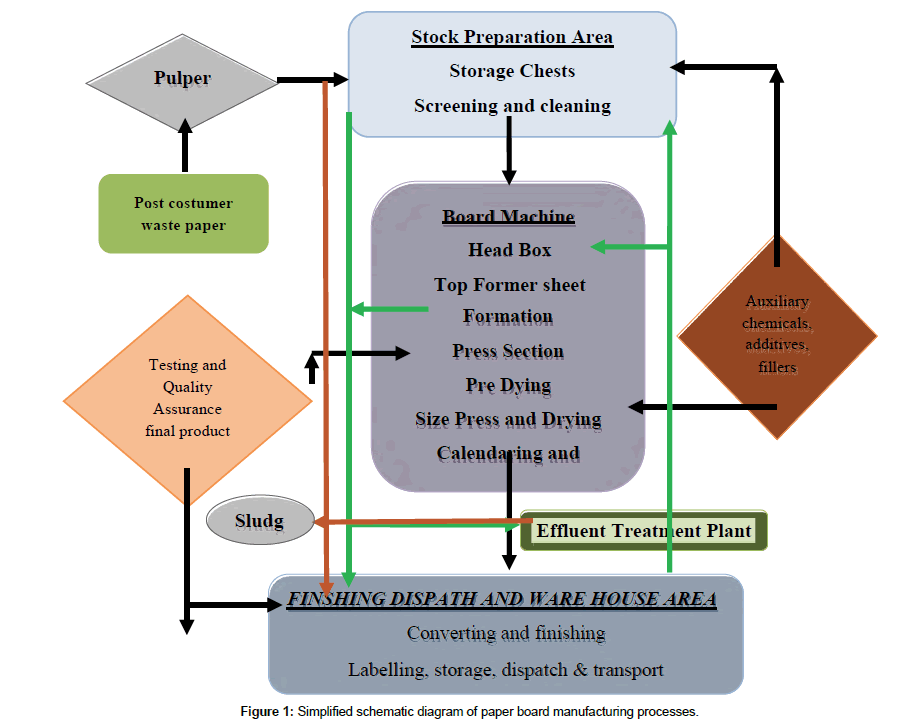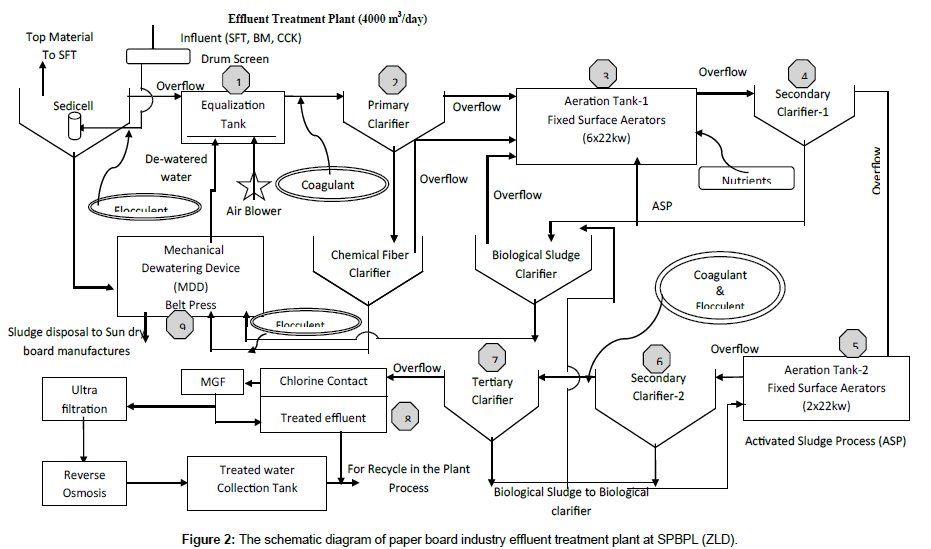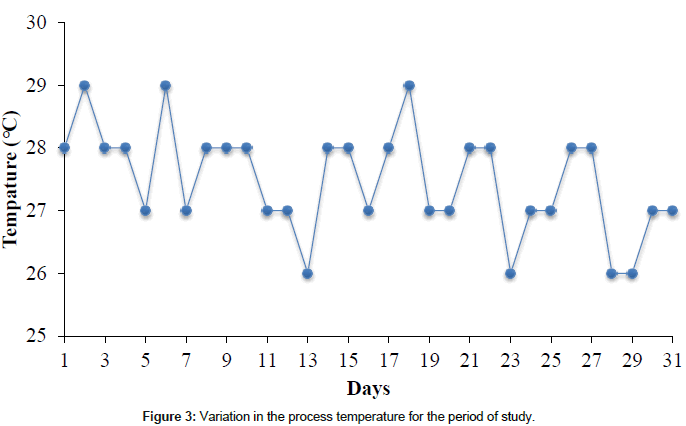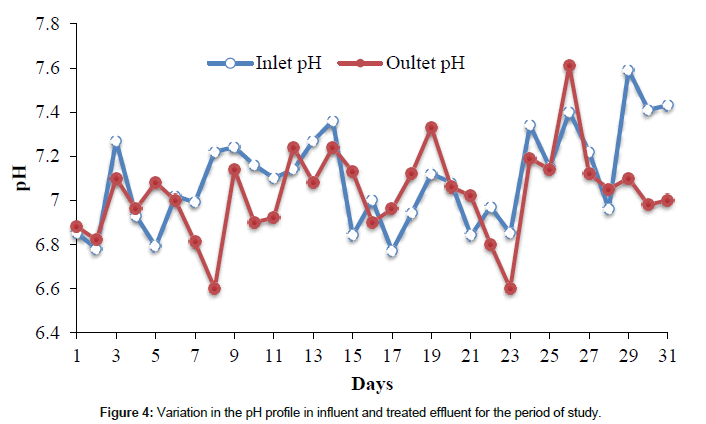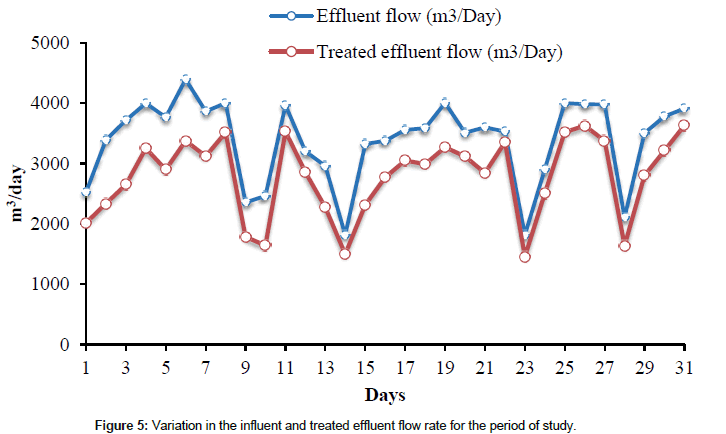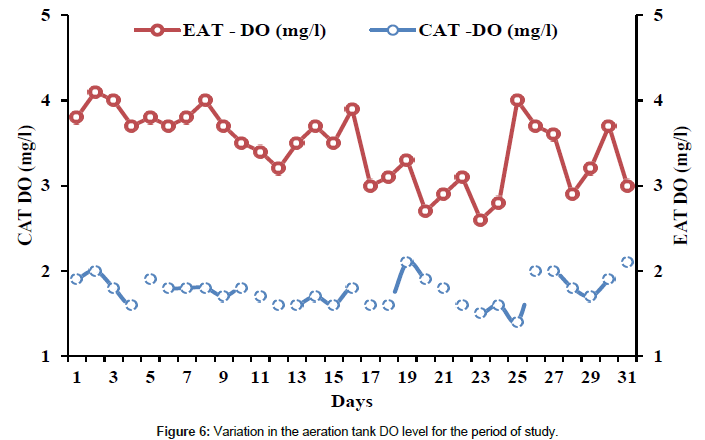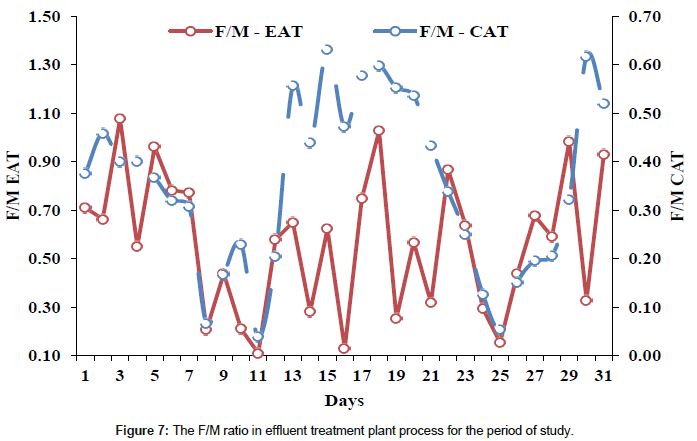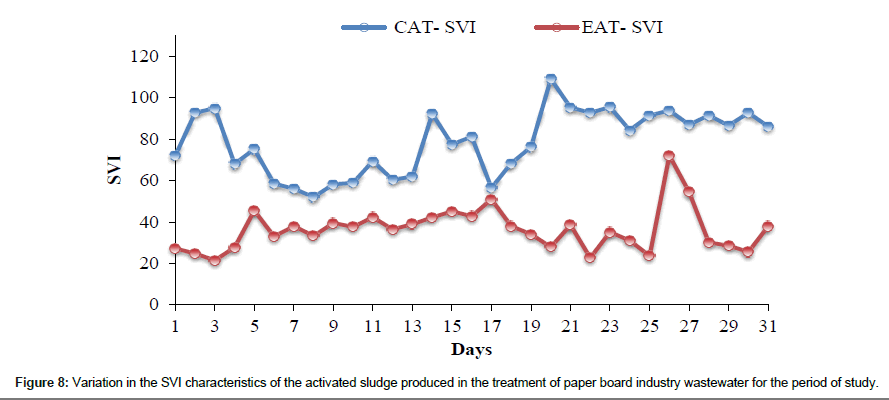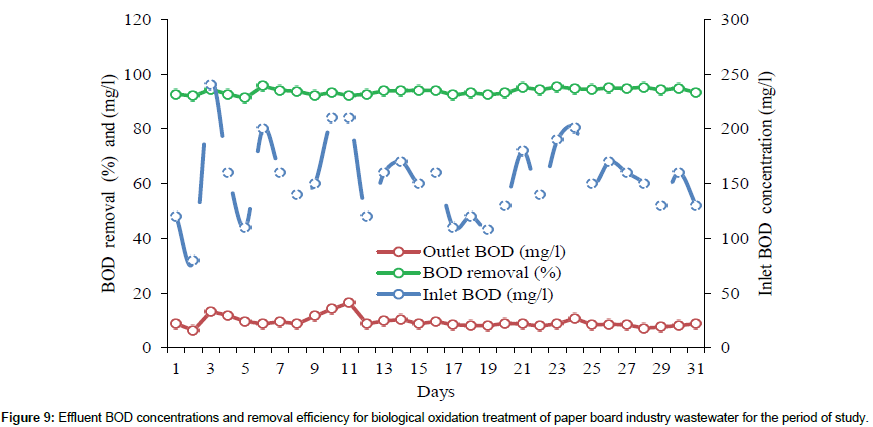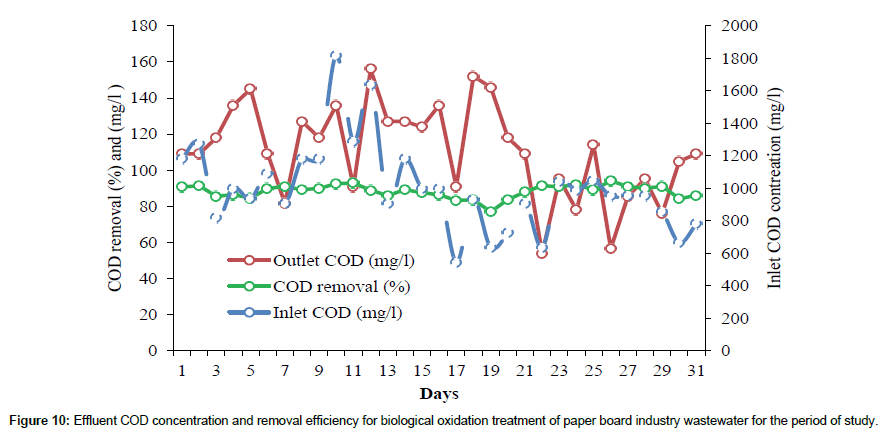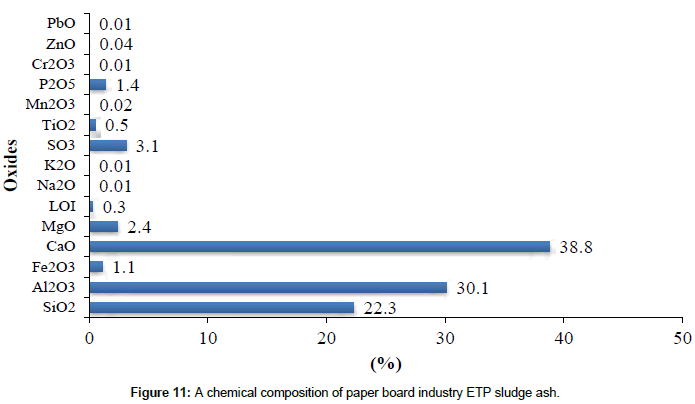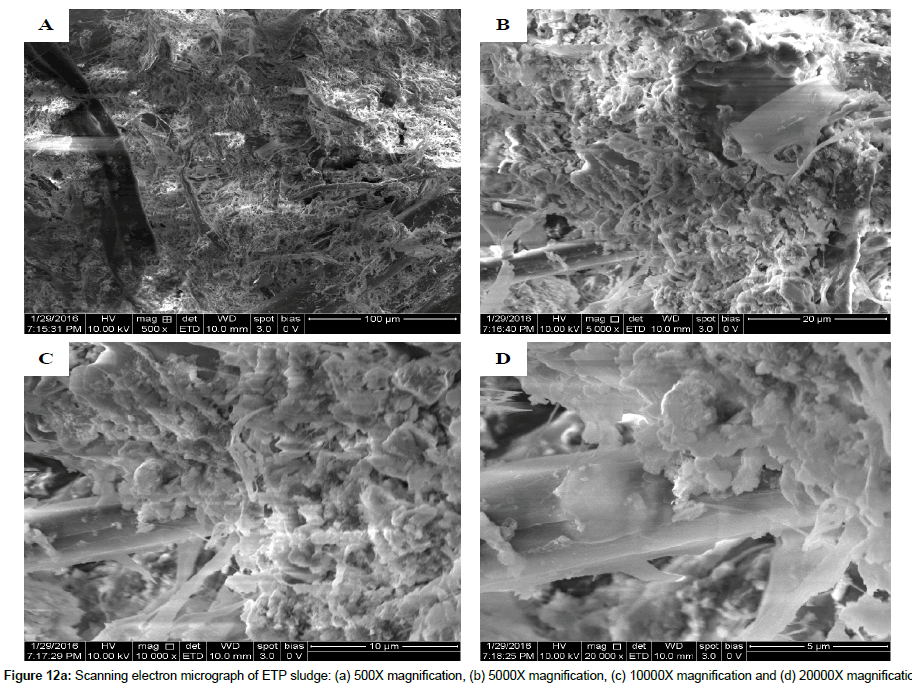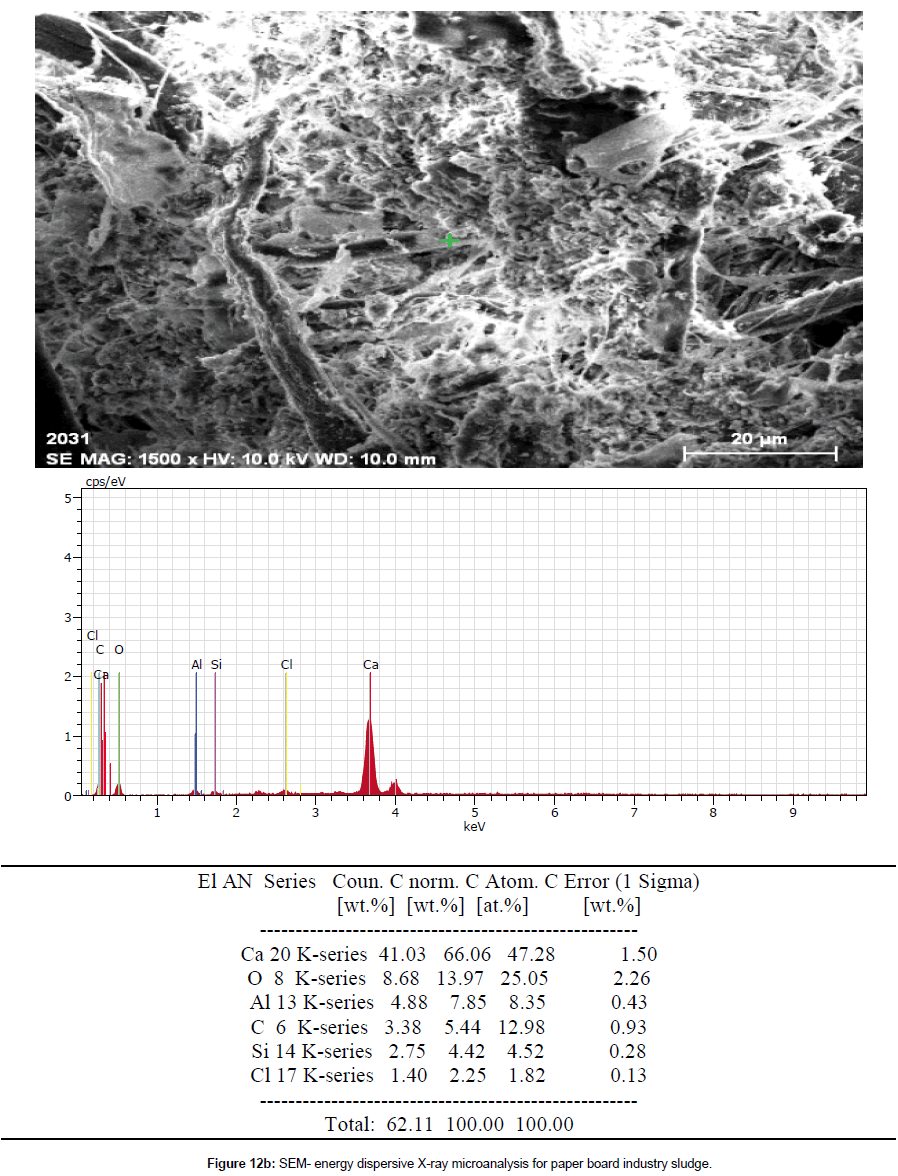Research Article Open Access
An Evaluation of Biological Approach for the Effluent Treatment of Paper Boards Industry - An Economic Perspective
K Rajkumar*
M/s Senthil Papers and Boards Private Limited, Ikkaraithathappalli Village, Sathyamangalam, Erode, Tamil Nadu, India
- *Corresponding Author:
- K. Rajkumar
M/s Senthil Papers and Boards Private
Limited, Ikkaraithathappalli Village, Sathyamangalam
Erode, Tamil Nadu, India
Tel: +919865310077
E-mail: krkenvnano@gmail.com
Received date: July 23, 2016; Accepted date: August 09, 2016; Published date: August 10, 2016
Citation: Rajkumar K (2016) An Evaluation of Biological Approach for the Effluent Treatment of Paper Boards Industry - An Economic Perspective. J Bioremediat Biodegrad 7:366. doi:10.4172/2155- 6199.1000366
Copyright: © 2016 Rajkumar K , et al. This is an open-a ccess article distributed under the terms of the Creative Commons Attribution License, which permits unrestricted use, distribution, and reproduction in any medium, provided the original author and source are credited.
Visit for more related articles at Journal of Bioremediation & Biodegradation
Abstract
The environmental problems of paper board industry are not limited by the high water consumption, generate wastewaters and solid wastes. This paper presents the paper board industry effluent treatment plant components performance and physio-chemical characteristics of wastewater and sludge. In ETP operation most important factors is effluent characterization, flow rate, aeration tank dissolved oxygen (DO) level, mixed liquid suspended solids (MLSS), food to micro-organism ratio (F/M), sludge volume and chemical addition for nutrients and coagulant. The wastewater is characterized by extreme quantities of pH, total dissolved solids (TDS), total suspended solids (TSS), biochemical oxygen demand (BOD), chemical oxygen demand (COD) and the solid waste from ETP sludge is characterized by SEM –EDX and ICP. The wastewater samples were collected from the partied of one month influent and treated effluent. An influent consist pH of 7.1-7.7, TSS of 1160-1380 mg/L, TDS of 1500-2000 mg/L, BOD and COD varies 200-250 mg/L and 2010-1286 mg/L respectively. The treated effluent of pH varies 7.1-7.3, TSS 10-20 mg/L, TDS ranges from 1500-1900 mg/L, BOD and COD ranges from 7-16 mg/L and 54-145 mg/L, respectively. Further solid waste in the form of sludge handled through mechanical dewatering devise (belt press). The result shows that the performance of effluent treatment plant based on the permissible limits prescribed by regulatory agencies and can be recycle an entire treated effluent into the board manufacturing process. The fixed capital cost was 700 lakhs- Indian Rupees (Rs.) and annual operation and maintenance cost was estimated Rs. 180 lakhs (without RO plant). Reuse of treated effluent in pulp process and sludge in sun dry board manufacturing and composting were adopted to achieve the target of sustainable development for ecological and economical gains.
Keywords
Paper board industry; Effluent treatment plant; Zero liquid discharge; Scanning electron microscopy; Reuse and recycling; Sludge
Introduction
Water is an essential raw material for manufacturing of paper boards, and effluent treatment is critical part of this process. The paper boards industry is highly evaluated for effective reuse of the waste paper and for its attitude toward effective use of precious resources on earth. The waste paper once used only as paperboard has come to be used as newspaper, writing paper. The produced wastewater has detrimental impacts on the environment and poses a serious threat to the wild and human life [1]. The pulp and paper industry is ranked as the third world’s largest consumer of water and is consequently producing high amounts of wastewaters [2]. The environmental impact of pulp and paper industry is a particular concern since these units generate 150- 200 m3 effluent/ton paper with a high pollution loading of 90-240 kg suspended solids /ton paper, 85-370 kg biochemical oxygen demand (BOD)/ton paper and 500-1100 kg chemical oxygen demand (COD)/ ton paper [3] and it is sixth largest polluter in the world (after the oil, cement, leather, textile, and steel industries) and emits a variety of gaseous, liquid, and solid wastes to the surroundings [4]. As per the Ministry of Environment and Forest (MoEF), Government of India, the pulp and paper sector is in the “Red Category” list of 85 industries having a high polluting potential CPCB (2016). Pulp and paper industry play a vital role in socio-economic development, while it is associated with significant environmental concerns due to its large footprints on environmental resources.
The researchers are more focused on environmental friendly technologies for the treatment of wastewater. Therefore they use biological approach for the removal of contaminants from the effluent. There are numerous aerobic biological treatment systems available, but the most common is the activated sludge process, which can achieve high removal efficiencies for BOD and COD [5,6]. The biological treatment process able to reduce COD, BOD, and toxic low molecular weight derivatives. Pulp and paper industry uses conventional activated sludge treatment process in which they are using nonspecific micro-organisms and they kept food/microbe (F/M) ratio low in the aeration tank. They are maintaining the effluent treatment plant with high MLSS in order to buffer the BOD, pH, wastewater composition or temperature. The manufacturing process depends upon the demand therefore the raw material changes accordingly, which in turn changes the ultimate pollution load in the wastewater.
Study Area
This study carried out from the M/s Senthil Papers and Boards (P) Limited, Tamil Nadu, India (Latitude- 11°29’54.13’’N and Longitude -77° 9’32.50’’E), a capacity of paper board manufacturing was 15,125 TPA (Ton/annual). A schematic overview covering the processes of main interest within this project is provided in Figure 1. The streams of wastewater originate primarily after several processes viz. secondary fiber treatment (SFT), board machines (BM) and coating chemical kitchen (CCK) is discharged as a wastewater to biological wastewater treatment plant.
Effluent treatment plant components
The wastewater generated from pulping process contains high concentration of BOD, COD and TSS, which subsequently undergo activated sludge process for the treatment. The ETP comprises of the following units, viz. drum screen, sedicell, equalization tank, primary clarifier, conventional Aeration, secondary clarifier – A, extended aeration, secondary clarifier – B, tertiary clarifier, chlorination, milt grad sand filter and mechanical dewatering devise (MDD). The activated sludge plant treats an average of 4000 m3 wastewater per day. Other technical information, wastewater characteristics and operation condition can be found in Tables 1-3 and the schematics of the ETP depicted in Figure 2. The effluent is first passed through screened with coarse filters (bar screen), and followed by dram screen for removal, of plastic and other floating materials in the pre-treatment stage. The effluent pumped into sedicell fiber recover system with addition of flocculent (4 kg/d) to remove the bottom and top of flotation pulp with 6-7 par presser of air dissolving tube (ADT) system and output of effluent less than 50 ppm of TSS and effluent collect an equalization basin and after fiber/pulp recovery the raw effluent will be neutralized in equalization tank with coarse bubble aeration system with air blowers are provided for equalization of raw effluent and surge control and will be taken to primary treatment where flocculants and coagulants are used to remove suspended solids.
| S No | Parameters | Hydraulic Retention Time (Hrs) | Volume (m3) |
|---|---|---|---|
| 1 | Mechanical Drum Screen | 0.4 | 12 |
| 2 | Sedicell | 1.9 | 350 |
| 3 | Equalisation Tank | 15 | 2500 |
| 4 | Primary Clarifier | 4.2 | 700 |
| 5 | Aeration Tank - I | 36 | 6000 |
| 6 | Secondary Clarifier -A | 5.4 | 900 |
| 7 | Aeration Tank - II | 15 | 2500 |
| 8 | Secondary Clarifier -B | 6 | 1000 |
| 9 | Tertiary Clarifier | 4.2 | 700 |
| 10 | Hypo Contact Tank | 2.4 | 400 |
| 11 | Treated Effluent Tank | 2.4 | 400 |
| 12 | Fiber Sludge Thickener | 2.6 | 80 |
| 13 | Biological Sludge Thickener | 0.5 | 14 |
Table 1: Technical information of the wastewater treatment plant at SPBPL.
| System Condition | Levels |
|---|---|
| Effective volume | 4000 m3 |
| Influent flow rate | 165m3/Hr |
| HRT | 36 Hr |
| pH | 06Jul |
| Dissolved Oxygen | 2-4 mg/L |
| Influent BOD | 200-300 mg/L |
| Influent COD | 1000-2500 mg/L |
| MLSS | 5000 mg/L |
| MLVSS | 3000 mg/L |
Table 2: Operation condition of the conventional treatment process.
| SNo | Parameters | Units | Equalization | Primary Clarifier | Aeration Tank - I | Secondary Clarifier -A | Aeration Tank - II | Secondary Clarifier -B | Tertiary Clarifier | Treated Effluent | SPCB stranded |
|---|---|---|---|---|---|---|---|---|---|---|---|
| 1 | 2 | 3 | 4 | 5 | 6 | 7 | 8 | ||||
| 1 | pH | 7.19 | 7.11 | 7.22 | 7.38 | 7.23 | 7.56 | 7.42 | 7.5 | 6.5-8.0 | |
| 2 | TSS | mg/L | 756 | 152 | 5036 | 16 | 3980 | 12 | 16 | 12 | 100 |
| 3 | TDS | mg/L | 1599 | 1612 | 1708 | 1843 | 1893 | 1878 | 1891 | 1946 | 2100 |
| 4 | Chloride | mg/L | 734 | 783 | 910 | 881 | 861 | 812 | 822 | 812 | 1000 |
| 5 | Sulphate | mg/L | 469 | 490 | 585 | 656 | 624 | 651 | 611 | 626 | 1000 |
| 6 | BOD | mg/L | 225 | 80 | 1800 | 4 | 1100 | 10 | 9 | 9 | 30 |
| 7 | COD | mg/L | 932 | 264 | 4480 | 88 | 3200 | 56 | 56 | 56 | 250 |
| 8 | Oil and Grease | mg/L | 18 | 12 | 24 | 4* | 22 | 4* | 4* | 4* | 10 |
*Below detectable limit
Table 3: Characteristics of paper board industry wastewater and ETP stage wise pollutants reduction.
In convention aeration tank added nutrient for microbial activation purpose and surface aerators are provided in aeration basins for oxygen transfer and mixing of biomass with wastewater. This is aerobic biological treatment process where the bacteria decompose the organic matter in presence of oxygen. The extended aeration system works in the lag growth phase of the bacterial growth curve i.e., endogenous phase. To maintain requisite MLSS and food to micro-organism ratio (F/M), part of settled sludge from Secondary Clarifier will be re-circulated back to the aeration tank. In addition diffused aeration arrangement also provided at the periphery of aeration tank which will ensure mixing of sludge once in a while. The clarifier is a hopper bottom circular tank with centrally driven clarifier mechanism. In clarifier solids get settled at the hopper bottom. The supernatant from the clarifier overflows uniformly over the peripheral launder. A part of sludge from clarifier re-circulated back to aeration tank while balanced is sent to thickener through sludge pump. Effluent from secondary clarifier-B shall be entering into the accelerated gravity separator. AGS is high rate treating clarifier, which produces treated water of highest quality with minimum time, space and chemicals. The supernatant from AGS overflows uniformly over the peripheral launder. It will enter in Hypo contact tank then Multi Grade Filter (MGF) feed tank. Treated effluent will then be pumped to an entire treated effluent recycles to board manufacturing process. The sludge generated from primary treatment and biological system taken sludge produced in the process is taken to the belt press dewater well be routed back to the treatment system.
The high costs associated with the plant and their operations require a wise optimization of the process. In recent years various systematic design approaches to wastewater reuse across complex manufacturing operations have been developed [7-11]. Because economic benefits are undoubtedly a major driver for industry to implement wastewater reuse programs, recent research in this area has focused on the economic optimization of wastewater reuse systems [12-15].
In the present research is to treat the paper board industry wastewater in biological oxidation in the meaning of environmental friendly manner and also to know the influences of Temperature, pH, F/M ratio and DO concentration on the microorganism’s growth and pollutant removal and to assess the biodegradability of the wastewater and also to recycle and reuse the waste for economic profits and suitability of a zero discharge system to paper board industry.
Materials and Methods
Samples collection and analytical methods
Wastewater from different streams was collected together as received finally by the ETP through a single drain. For the present study, effluent samples were collected from over flow of sedicell, primary clarifier, aeration tank-A, secondary clarifier -A, aeration tank –B, secondary clarifier –B, Tertiary clarifier and MGF. The liquid waste parameters such as pH, Temperature, TDS, TSS, COD, BOD, Cl and SO4 were monitored at influent and treated effluent. All the samples were analyzed using analytical grade chemicals and all the parameters were analyzed using the Standard Methods for the Examination of Water and Wastewater of the American Public Health Association (APHA, 1995) and are approved by the U.S. Environmental Protection Agency (USEPA). In solid waste sample analyses were performed in Scanning Electron Microscopy (SEM) quanta FEG 250 FEI Company, Czech Republic and Perkin Elmer optima 5300DV ICP-OES.
Results and Discussion
Wastewater characteristics
Pollution loading of the paper board industrial wastewater depends significantly on the raw material used. Wastewater characteristics were analyzed in order to see the fluctuations in loadings during board machine production process. The effluent was characterized for various physicochemical parameters like: pH, Temperature, TSS, TDS, Chloride, Sulphate, BOD, COD and Oil and Grease in a process step wise showed in Table 2.
ETP performance
This analysis will give us a brief idea of ETP performance and efficiency of process to pollution load handle daily by the industrial persons. The wastewater was collected over a period of study and the results were depicted in Figures 3-11.
Temperature: Temperature was greatly affects the activity of microbes [16]. There are different types of bacteria (Psychrophiles exist at 5°C-35°C, Mesophile at 25°C-40°C and Thermophiles at 25°C-75°C) depending on the temperature range. Figure 3 shows that the range of temperature observed during the one month study of wastewater characteristics fall between 25°C - 30°C.
pH: pH of wastewater is very important to be monitored as it determines the feasibility of a particular sample to be biologically treated [17,18]. Biological treatment can be suitably applied to wastewater only if pH values are near neutral. Acidic and basic character of the wastewater has negative effect on the microorganisms and thus leads to inefficient treatment [19]. The normal pH in wastewater for bacterial survival is 5 to 9. But, neutral pH i.e., about 6.5-7.5 is required for the optimum activity of the bacteria. If the pH is in acidic range fungi can become predominant than the bacteria which will results in poor settling. If the pH is too high it will affect the metabolic activity of the microbes which directly affects the treatment process [20]. For bacteria there is an orderly increase in growth rate between the minimum and maximum pH. Figure 4 showed that the levels of pH in the conversional treatment process influent and treated effluent range between 6.6 to 7.6 and 6.8 to 7.5 respectively. The additions of coagulants (non-ferric alum) depress the wastewater pH to a lower or higher value. The decrease in pH after the addition of coagulant may be due to the several hydrolytic reactions, which are taking place during coagulation, forming multivalent charged hydrous oxide species and generating H3O+ ion during each step, thus reducing the pH value [21]. It has also been reported that the coagulant addition depresses pH to highly acidic levels, as the coagulant dose is highly correlated with pH [22]. It is supposed that improvement of flocculation pH may reduce the alum dose needs for the optimization of the process. It can be said that the highest range of pH exists between 6.0 and 8.0, beyond which the effluent quality deteriorates.
Effluent flow rate: The effluent flow rater and hydraulic react time is induced the performances of the process and the desired degree of treatment. It is an important parameter because industrial persons cannot hold their wastewater within their premises for longer period. Figure 5 clearly shows that the flow rate of the influent 4396 m3/d (Max) and 1816 m3/d (Min) and treated effluent 3232 m3/d (Max) and 1456 m3/d (Min), respectively. The maximum and minimum input of influent not affects the treatment process. Wastewater aeration time, usually expressed in hours, is based on the time required by the microorganisms to degrade the organic load present therein. Table 3 shows that the hydraulic react time of each system.
Dissolved Oxygen (DO): Dissolved oxygen supplying with 22 kw surface fixed aerators in conventional aeration take (6 Nos) and extended aeration tank (2 Nos). DO is required by the microorganisms to respire properly in aeration tank (Figure 6). Too much oxygen adds unnecessary cost due to increased power consumption and too little can decrease the metabolism of the micro-organisms and the efficiency of the process. The optimum range for the DO in the treatment plants were in between 2-3.5 mg/L.
F/M ratio: The food to microorganism ratio is defined as the ratio between the amount of food (organic matter) entering the treatment plant and the mass of micro-organisms (MLSS) in the aeration tank [23]. The F/M ratio is an important control parameter as the quantity of biomass present will influence the removal efficiency. The F/M ratio is indirectly proportional to the MLSS. If F/M ratio is low, then MLSS is high with low dissolve oxygen concentration. Due to which filamentous bulking occurs that cause poor settling problems. Figure 7 shows that the conversional and extended aeration tank F/M ratio effective to treat the wastewater. If F/M ratio is high then, MLSS is low which will affect the treatment process. If any fluctuation occurs in the production process and the wastewater entering the treatment system with high organic load than at that time the entire system fails because this will not be encountered properly by the low MLSS treatment system. This treatment results in effective BOD removal but face several problems. Low F/M ratio leads inadequate food for the population of microorganisms and problem arises in maintaining the sufficient dissolved oxygen concentration [24].
Nutrient dosing: Levels of nitrogen and phosphorus in paper board industry effluents are usually low compared to municipal sewage. Nitrogen and Phosphorus are the essential elements other than the carbon for the proper growth and activity of the microorganism present in the aeration chamber [25]. Pulp and paper industrial effluent is rich in carbon source due the raw material used but, wastewater is deficient in N and P [26]. For effective treatment of wastewater, significant quantity of N and P must be added because micro-organisms present in the effluent require N and P to produce enzymes for the degradation of organic matter present. These observations are in close agreement with other’s findings [27,28]. Insufficient N can result in filamentous and dispersed growth of microbial population which settles poorly. As a general rule the ratio of N and P required with respect to BOD load is 100 BOD :5 N :1 P. Although nitrogen limitation has been reported as an important factor in inducing ligninolytic activity and ligninase production in several white rot fungi [29,30].
Sludge Volume Index (SVI): The sludge produced in physical– chemical treatments is due to the organic matter and total solids in suspension that are removed and the compounds formed with the coagulants used, since practically all of the latter become part of the sludge solids. In general, the amount and characteristics of the sludge produced during the coagulation process depend on the coagulants used and on the operating conditions. Sludge settleability was determined by measuring the SVI, which is the volume of MLSS after 30 min of settling. The SVI in coagulation process is generally governed by three factors: high polymer effect, osmotic pressure effect and hydration effect [31]. The SVIs measured throughout the study and its important parameter for the treatment of wastewater. SVI is used to assess the settling qualities of sludge and minimum and maximum values were 52 and 109 respectively (Figure 8). It is reported in literature that SVI can vary from 30-400 mL/L [32]. But it is also mentioned that if the value increased from 150 mL/L the plant operator should face the problem of sludge bulking [33].
BOD and COD removal: Aerobic treatment currently use on site biological treatment. There are numerous biological treatment systems available, the most common being the activated sludge process. BOD and COD the pulping process plays a central role in the pollution load and composition of the wastewater produced by the pulp and paper mills [4]. SFT house liquors contain high amounts of chemicals, lignin, residual fibres, etc., which result in increased levels of BOD and COD as high as 400 and 2500 mg/L, respectively. The BOD and COD levels of influent wastewater varied from 80-240 mg/L and 545-1817 mg/L respectively. Whereas the BOD and COD levels of effluent varied from 16.5-6.4 mg/L and 54.1-156 mg/L respectively. Figures 9 and 10 clearly shows that the levels of BOD and COD values show that the removal percentage is 91.27- 95.60% and 77.04 - 94.05% respectively. These show that very high removal efficiency can be obtained both for BOD and COD removal. These reduced to certain extent due to biological treatment process for which the effluent is treated which consists of equalization, primary clarifier, aeration tank, secondary clarifier, tertiary clariflocculator and MGF. Biological treatment process results in oxidation of organic matter, which provides energy for microbial metabolic process. It could be argued that there are two critical operational aspects of an activated sludge plant; maintaining a proper control of the dissolved oxygen (DO) concentration in the aeration tank and maintaining a good settling sludge. After observing the results the reduction obtained in case of BOD, and COD, were 93.7 and 88.3% respectively with 79 Sludge Volume Index (SVI).
Total dissolved solids and total suspended solids: High amounts of dissolved solids that are commonly known as TDS. The biological treatment process cannot reduce TDS to any significant extent and the efficiency of the system can be greatly affected by high TDS [34]. The major portions of such solids are inorganic and present mostly in ionic form. Nowadays, removal of dissolved solids from industrial wastewater is a challenging job for the environmental engineers. Inorganic components of dissolved solids are more difficult to remove by biological processes. Membrane separation (ultra-filtration) [35,36] or reverse-osmosis [37] are the treatment technologies that can be employed for TDS removal. Total Dissolved Solids were also alarmingly high in treated effluent, crossing the 2,100 mg/L limit set by the Indian regulatory authorities (Table 2). Table 2 shows the total dissolved solids concentration from inlet 1599 mg/L whereas from treated effluent 1946 mg/L respectively. TDS is also one of the often-neglected parameters, even though it can have tremendous effects on the overall quality of water. In this site especially TDS control purpose installed tertiary treatment for ultra-filtration (UF) followed by reverse-osmosis (RO). Membrane treatment in paper board industry serves to optimize loop closure and therefore helps to reduce fresh water intake as well as wastewater treatment.
Table 2 shows the concentration of suspended solids measured from influent 756 mg/L after treatment the concentration of suspended solids measured from treated effluent 12 mg/L respectively. ETP operation performance to total suspended solids reduced 74% due to the presence of sedicell recover fibres system in ETP. A sedicell removes solids by means of dissolved air flotation and sedimentation simultaneously. Floatation of solids occurs because of air bubbles introduced into the feed water. Clarified water from the outlet of the sedicell is pumped under pressure through an air dissolving tube where air under pressure is dissolved in the water. This air stays in solution as long as the water is at pressure. The pressure is released by a special globe valve, just before this water is injected into the feed line. This pressure reduction causes the air to come out of solution and form millions of tiny air bubbles, which then attach themselves to the solid particles in the feed water. These bubbles cause the solids to float to the surface of the sedicell where they can be removed by the spiral scoop. The recover fibres send back the stock preparation plant tower. The sedicell overflow wastewater less the 50 mg/L of TSS directly raw effluent reused in SFT plant, so that reduced the wastewater treatment cost and sludge production less in ETP primary clarifier. An economic perspective the sedicell recovered fiber again used in paper board manufacturing process and indirectly raw material wastage avoided and also raw material procurement cost saved.
Energy consumption of aeration system: The biological treatment system has eight surface aerators (each 30 hp, 1 horsepower hour=0.746 kWh−1). The energy consumption of aerators 179.04 kWh−1, the activated sludge process most efficient technology for the removal of pollutants depends on the nature of the pollutant. However, the cost of the treatment terms of electrical units (kWhm-3). In the case of ETP, the estimation of the price per unit (oxygen added), as the aeration is directly related to the specific energy consumption of aerators (kWhm- 3), tank volume 8500 m3 and the energy consumption can be obtained from this value by using Eq. (1), Once the energy consumption has been calculated, the price of the power unit permits the price of the oxygen transfer dose to be calculated:
 (1)
(1)
Solid waste
Generally, the paper and board manufacturing units practice recycle and reuse the treated effluent for the secondary fiber treatment process and by-products from ETP Primary sludge is generated in the clarification of process water by kidney treatments, e.g., dissolved air flotation. The sludge consists of mostly fines and fillers depending on the recovered paper being processed and it is relatively easy to dewater. Secondary sludge are often difficult to handle (due to a high microbial protein content), and such solids need to be mixed with primary sludge to permit adequate dewatering [38]. The paper and board manufacturing units about 300 kg of sludge is produced for each 1 ton of recycled paper [39]. The mechanical dewatering of paper board industry sludge is usually performed using a series of process units, such as gravity table or rotary thickener followed by a belt press or a screw press, as each process unit operates in different ranges of the total solids content. Primary and secondary sludge it is either recycled to the product: Sun dry board and composting respectively.
Sludge physical and chemical properties: Sludge showed a wide range of humidity 65 ± 15. Variability depended on the method used to clarify and dewater sludge, and the presence of chemicals (polyelectrolytes) used to aid. The Proximate analysis of paper board industry sludge shown in Table 4. The main organic components of the sludge are cellulose fibers, hemicellulose, lignin and, to some extent, also organic binders and process chemicals which are all residues from the processes and enter the biological wastewater treatment plant via the process water flows circulating in the process. The chemical compositions in the form of oxides are showed in Figure 12. Sludge ash concentrates heavy metals, however, and if their concentration arises hazardous levels, the ash requires special handling [40,41]. Every tone of recovered fiber generates up to 200 kg (dry weight) of sludge of different types and up to 400 kg (dry weight) of rejects and sludge.
| Sludge | Proximate analysis | Sodium (%) ODB* | Chloride (%) ODB* | Calorific Value (kCal/kg) | |||
|---|---|---|---|---|---|---|---|
| Moisture (%) | Volatile Mater (%) | Ash (%) | Fixed Carbon (%) | ||||
| Primary and secondary clarifier | 61.7 | 31.7 | 6.4 | 0.2 | 0.9 | 0.3 | 1879 |
*On dry base
Table 4: Proximate analysis of paper board industry ETP sludge.
Sludge structure analyses: The sludge generated by the biological wastewater treatment process at pH=7 and the fractured concrete specimens were analyzed by scanning electron microscopy (SEM) and energy dispersive X-ray microanalysis (EDS). The sludge is flocculating suspension liquid, which is made up of living or dead microorganism in network structure of extracellular polymeric substance, mixing some organic and inorganic. Sludge present in the form of complex floc structure. There are a lot of pore holding too much water in those floc structure. SEM image can be shown that Figure 12a, the shape of sludge is irregular loose body, which has much pore on surface filling with a number of small grains and holding a lot of floc, forming irregular structure. The sludge shows a heterogeneous morphology, as shown in Figure 12b. Its elemental composition as determined by EDS results show that the amount of carbon (12%), oxygen (25%), calcium (47.28%), chloride (1.85%) silica (4.52%) and aluminum (8.35%). The counts referred to the lowest energy 0.25 -0.5 keV. The peak at 1.5, 1.8 2.7 and 3.7 keV was assigned to Al, Si, Cl and Ca respectively. The sludge contained more silica and calcium than that of the other inorganic elements. This may be the reason for calcium and oxygen is mainly present in calcium carbonate, which is used as filler and coatings in paper board making process.
Sludge macro and micro nutrient: The macro and micro elements contents of paper board industry sludge change dramatically based on the sludge source. Metals occur in sludge in various physicochemical forms, such as soluble, adsorbed, exchangeable, precipitated, organically, complexed, and residual phases. They used it to fractionate metals into the following fractions: (1) Exchangeable fraction, representing the most easily available metals, (2) Acid-soluble (carbonate bound) fraction, (3) Reducible (Fe – Mn oxide bound) fraction, (4) Oxidizable (organically+sulphide bound) fraction, and (5) Residual fraction, that is tightly bound to the silicate matrix of the sample. If heavy metals exist as loosely bound fractions, such as the soluble or exchangeable faction, then they tend to be easily moved and dispersed, whereas metals associated with the silicate matrix are not easily separated or mobilized [42-44]. Table 5 also shows that the high amount of K, Al, Fe, Mg and Na with a very small amount of Be, As, Se, Cd and Mo. The high organic matter content and low trace metal and organic pollutants in paper board industry sludge suggest that these residuals may provide a valuable resource for soil amendments.
| SNo | Metals | Mass | Concentration (mg/kg) |
|---|---|---|---|
| 1 | Be | 9 | 0.0002 |
| 2 | Na | 23 | 8.7333 |
| 3 | Mg | 24 | 9.7866 |
| 4 | Al | 27 | 61.8084 |
| 5 | K | 39 | 1.2967 |
| 6 | Cr | 52 | 0.1594 |
| 7 | Mn | 55 | 0.4242 |
| 8 | Fe | 57 | 11.5066 |
| 9 | Ni | 60 | 0.1526 |
| 10 | Cu | 63 | 0.3272 |
| 11 | Zn | 66 | 0.4698 |
| 12 | As | 75 | 0.0032 |
| 13 | Se | 82 | 0.0003 |
| 14 | Mo | 98 | 0.0408 |
| 15 | Cd | 111 | 0.0048 |
| 16 | Pd | 208 | 0.1118 |
Table 5: Macro and micro elements of paper board industry ETP sludge.
Economic study
Based on the above results, effluent treatment plant economic study for 4000 m3/d wastewater treatment plant for the paper board industry was conducted. The maximum design parameters of wastewater are illustrated in Table 3. Figure 2 shows the schematic block flow diagram of the effluent treatment system. The fixed capital cost was Rs. 700 lakhs and operation cost (not added RO plant) such as chemicals, energy and maintenance was Rs. 180 lakhs/Annual. The total operation costs were chemical 8%, energy 80% and maintenance 12% respectively.
Conclusions
This study has demonstrated the practical feasibility of biological oxidation during treatment of a paper board wastewater and the conclusions can be summarized as follows:
• The result obtained indicated that biological oxidation has a great potential in treating paper board industry wastewater stable operation and removal performance at where, conventional aeration treatment provided a high reduction of TSS 92.10%, BOD 93.70%, COD 88.33% respectively.
• The paper board industry is adopting zero liquid effluent technologies to reduce freshwater consumption. This implies closure of water circuits and the progressive accumulation of pollutants that must be removed before water reuse. Based on the result biological wastewater treatment plant pollutants removal too high and zero liquid effluent technologies without RO operation. But the TDS concentration increased due to the entire treated effluent recirculation in the process. The TDS concentration reducing purpose using RO plant.
• Solid waste from ETP sludge contains significant amount of inorganic compounds, calcium and aluminium is the highest one, silicon and magnesium also present in measurable amount and other macro and micro elements are observed. This sludge disposed in a safe manner in the way of primary sludge sun dry board manufacturing and secondary biological one of the raw material for composting materials.
• The total operation cost played a very important role in determining the treatment cost. The observed result indicate that further reduction in the operation cost for energy can contribute strongly to reduced the total treatment cost.
Acknowledgements
The author Dr. KR thankful to Thiru O. Arumugasamy, Chairman of Senthil Group of Companies, Sri A. Senthilkumar, Managing Director, Senthil Papers and Boards (P) Limited, Mr. T. N. Vetrivel, Director and Mr. Lakshmanan Pillai, Unit Head of Senthil Papers and Boards (P) Limited, Tamil Nadu, India for inspiration.
References
- Ashrafi O, Yerushalmi L, Haghighat F (2015) Wastewater treatment in the pulp-and-paper industry: A review of treatment processes and the associated greenhouse gas emission. J Envirol Manage 158:146-157
- Sevimli MF (2005) Post-treatment of pulp and paper industry wastewater by advanced oxidation processes. Ozone: Science and Engineering 27: 37-43.
- Mathur RM, Panwar S, Gupta MK, Endlay N, Kukarni AG (2004) Agro-based pulp and paper mills: environmental status, issues and challenges and the role of Central Pulp and Paper Research Institute. In:TewariPK (Eds) Liquid asset, proceedings of the Indo-EU workshop on promoting Efficient Water Use in Agro Based Industries. TERI Press, New Delhi, India,pp: 99-114.
- Ali M, Sreekrishnan TR (2001) Aquatic toxicity from pulp and paper mill effluents: a review. Adv Environ Res 5: 175-196
- Thompson G, Swain J, KayM, Forster CF(2001) The treatment of pulp and paper mill effluent: a review.Bioresource Technology 77: 275-286.
- Pokhrel D, Viraraghavan T (2004) Treatment of pulp and paper mill wastewater – a review, Science of the Total Environment 333: 37-58.
- Wang YP, Smith R (1994) Wastewater minimization.ChemEngSci 49: 981-1006.
- Kuo WC, Smith R (1998) Designing for the interactions between water-use and effluent treatment. Chemical Engineering Research and Design 76: 287-301.
- Almato M, Espuna A, Puigjaner L(1999) Optimization of water use in batch process industries.ComputChemEng 23: 1427-1437.
- Dunn RF, WenzelH (2001) Process integration design methods for water conservation and wastewater reduction in industry. Part 1. Design for single contaminants. Clean Prod Processes 3: 307-318.
- Rajkumar K, Muthukumar M, Sivakumar R (2010) Novel approach for the treatment and recycle of wastewater from soya edible oil refinery industry—An economic perspective. Resources, Conservation and Recycling 54: 752-758
- Hallale N, Fraser DM (1998) Capital cost targets for mass exchange networks. A special case: water minimization. Chemical Engineering Sciences 53: 293-313.
- Jodicke G, Fischer U, Hungerbuhler K (2001) Wastewater reuse: a new approach to screen for designs with minimal total costs. ComputChemEng 25: 203-215
- Parthasarathy G (2001) Minimization of cost of recycling in chemical processes. ChemEng J 81: 137-151.
- Koppol APR, Bagajewicz MJ, Dericks BJ, Savelski MJ (2003) On zero water discharge solutions in the process industry. Adv Environ Res 8: 151-171.
- Brahmani PSR, Mugeraya G, Sandhyavali MS (2012) Effect of media constituents on microbial enzyme activity. Inter J PhrmaChemBiolo Sci. 2: 236-241.
- Jivendra (1995) Water pollution control in pulp and paper industry–a global review. Water pollution management APH publishing cooperation, New Delhi, Indiapp:13-47.
- Pepper IL, Gerba CP, Brusseau ML (1996) Pollution science. Carolina: Academic.
- Atlas RM (1993) Handbook of microbiological media. Florida, USA.
- Kumar V, Dhall P, Kumar R, Prakash Singh Y, Kumar A (2012) Bioremediation of agro-based pulp mill effluent by microbial consortium comprising autochthonous bacteria. Scientific World Journal pp:1-7
- Kumar P, Teng TT, Chand S, Wasewar KL (2011) Treatment of paper and pulp mill effluent by coagulation. Int J Civil Environ Eng 3:222-227
- Chaudhari P, Mishra I, Chand S (2007) Treatment of biodigester effluent with energy recovery using various inorganic flocculant. Colloids Surf. A PhysicochemEng Aspects 296: 238-247
- Michael HG (2002) Nitrification and Denitrification in the Activated Sludge Process. John Wiley & Sons, Inc, publications, USA.
- Virendra Kumar, PurnimaDhall, Sanjay Naithani, Anil Kumar, Rita Kumar (2014) Biological Approach for the Treatment of Pulp and Paper Industry Effluent in Sequence Batch Reactor. J BioremedBiodeg, vol: 5
- U.S. Environmental Protection Agency (USEPA) (2012) In-Situ Groundwater Bioremediation, USA.
- Dijkstra P, Thomas SC, Heinrich P L, Koch GW, Schwartz E (2011) A Effect of temperature on metabolic activity of intact microbial communities: Evidence for altered metabolic pathway activity but not for increased maintenance respiration and reduced carbon use efficiency. Soil BiolBiochem 43: 2023-2031.
- Shabir G, Afzal M, Anwar F, Tahseen R, Khalid ZM (2008) Biodegradation of kerosene in soil by a mixed bacterial culture under different nutrient conditions. IntBiodeteriorBiodegrad 61: 161-166
- Nikolopoulou M, Pasadakis N, Kalogerakis N (2007) Enhanced bioremediation of crude oil utilizing lipophilic fertilizers. Desalination 211: 286-295.
- Crawford RL, Crawford DL (1984) Recent advances in studies of the mechanisms of microbial degradation of lignins. Enzyme Micro Technol 6: 434-442
- Keyser P, Kirk TK, Zeikus JG (1978) Ligninolytic enzyme system of Phanerochanetechrysosporium synthesized in the absence of lignin in response to nitrogen starvation. J Bacteriol 135: 790-797
- Wang JP, Chen YZ, Ge XW, Yu HQ (2007) Optimization of coagulation-flocculation process for a paper-recycling wastewater treatment using response surface methodology. Colloids Surf PhysicochemEng Aspects 302: 204-210
- Janczukowicz W, Szewczyk M, Krzemieniewski M, Pesta J (2001) Settling Properties of Activated Sludge from a Sequencing Batch Reactor (SBR). Polish J Environ Stud 10: 15-20.
- Palm J, Jenkins D (1980) Relationship Between Organic Loading, Dissolved Oxygen Concentration and Sludge Settleability in the Completely Mixed Activated Sludge Process. Journal WPCF 10: 2484-2506.
- Pophali GR, Kaul SN, Mathur S (2003) Influence of hydraulic shock loads and TDS on the performance of large-scale CETPs treating textile effluents in India. Water Res. 37: 353-361.
- AlvesAMB, De PinhoMN (2000) Ultrafiltration for colour removal of tannery dyeing wastewater. Desalination 130: 147-154.
- Viero F, Mazzarollo ACR, Wada K, Tessaro IC (2002) Removal of hardness and COD from retaining treated effluent by membrane process. Desalination 149: 145-149.
- Cassano A, Molinari R, Romano M, Drioli E (2001) Treatment of aqueous effluents of the leather industry by membrane processes: a review. Journal of Membrane Science 181: 111-126.
- Monte MC, Fuente E, Blanco A, Negro C (2009) Waste management from pulp and paper production in the European Union. Waste Manag 29: 293-308
- Balwaik SA, Raut SP (2011) Utilization of waste paper pulp by partial replacement of cement in concrete. Int J Eng Res Appl 1:300-309
- Shin D, Jang S, Hwang J (2005) Combustion characteristics of paper mill sludge in a lab-scale combustor with internally cycloned circulating fluidized bed. Waste Management 25: 680-685.
- Usherson J (1992) Recycled paper and sludge. Resource Recycling 3: 95-99
- Quaye AK, Volk TA, Hafner S, Leopid (2011) Impacts of paper mill sludge and manure on soil and Biomass production of willow. Biomass and bioenergy 35: 2796-2806
- CPCB (2016) Revised categorization of industries in view of directions issued by the CPCB under the section 18(1) (b) of the water (P&CP) Act 1974 and the Air (P&CP) Act, 1981.
- Hanel K (1988) Biological treatment of sewage by the activated sludge process. Horwood E (ed.), Halsted Press, New-York, USA.
--
Relevant Topics
- Anaerobic Biodegradation
- Biodegradable Balloons
- Biodegradable Confetti
- Biodegradable Diapers
- Biodegradable Plastics
- Biodegradable Sunscreen
- Biodegradation
- Bioremediation Bacteria
- Bioremediation Oil Spills
- Bioremediation Plants
- Bioremediation Products
- Ex Situ Bioremediation
- Heavy Metal Bioremediation
- In Situ Bioremediation
- Mycoremediation
- Non Biodegradable
- Phytoremediation
- Sewage Water Treatment
- Soil Bioremediation
- Types of Upwelling
- Waste Degredation
- Xenobiotics
Recommended Journals
Article Tools
Article Usage
- Total views: 23513
- [From(publication date):
September-2016 - Jul 13, 2025] - Breakdown by view type
- HTML page views : 21833
- PDF downloads : 1680

